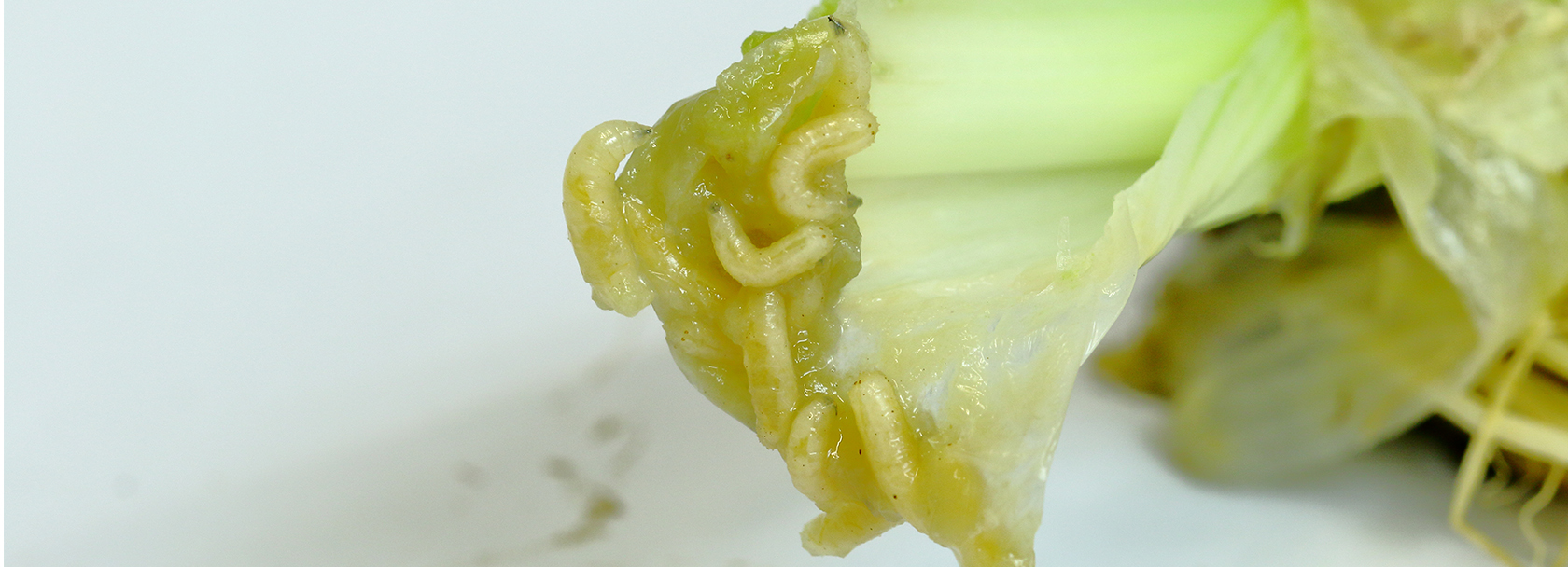Onion fly
Zwiebelfliegen im Garten bekämpfen
Delia antiqua
The onion fly is about 5 mm in size and looks very similar to the house fly. It is one of the most important pests in leek cultivation and is characterized by its long flight time.
The 6 to 8 mm long larvae of the onion fly are headless and legless.
Life cycle of the onion fly
The pupae of the onion fly overwinter in the soil. The adult flies appear in the first half of June. Eggs (oval, about 1 mm long) are laid in the soil near plants, near leaf sheaths, or directly on onion plantlets. The larvae hatch after 3 - 8 days and penetrate the bulb. After 2 - 3 weeks they pupate. The second generation follows in late summer, sometimes a third.
Damage caused by onion flies
The larvae of the onion fly mainly damage young plants. They feed in the stems and bulbs and also migrate to new plants. The second and probably third generation larvae feed in the adult bulbs. As a result of feeding, the plant's heart leaves turn yellow. Seedlings wilt and die. Bulbs rot. Shortly after emergence, young plants wilt. Foliage turns yellowish-gray, dies, and is easily pulled from the soil. Larval galleries are found in older plants, which usually begin to rot later. The adult onion fly does not cause damage.
On which plants are onion flies found?
Numerous onion plants are affected, such as edible onions, leeks, chives and garlic.

Control onion flies with beneficial nematodes
Nematodes are tiny, filamentous soil organisms about 0.6 mm long. They are natural enemies of the onion fly. Certain species of nematodes specialize on the onion fly, among others, and can use its larvae for their own feeding and reproduction. The nematodes are supplied alive in a powder. For application, they should be mixed with water exactly according to package directions and applied to the affected areas.
What stages of the onion fly can I control?
From May to August, the larvae of the different generations present in the soil can be controlled with nematodes.
